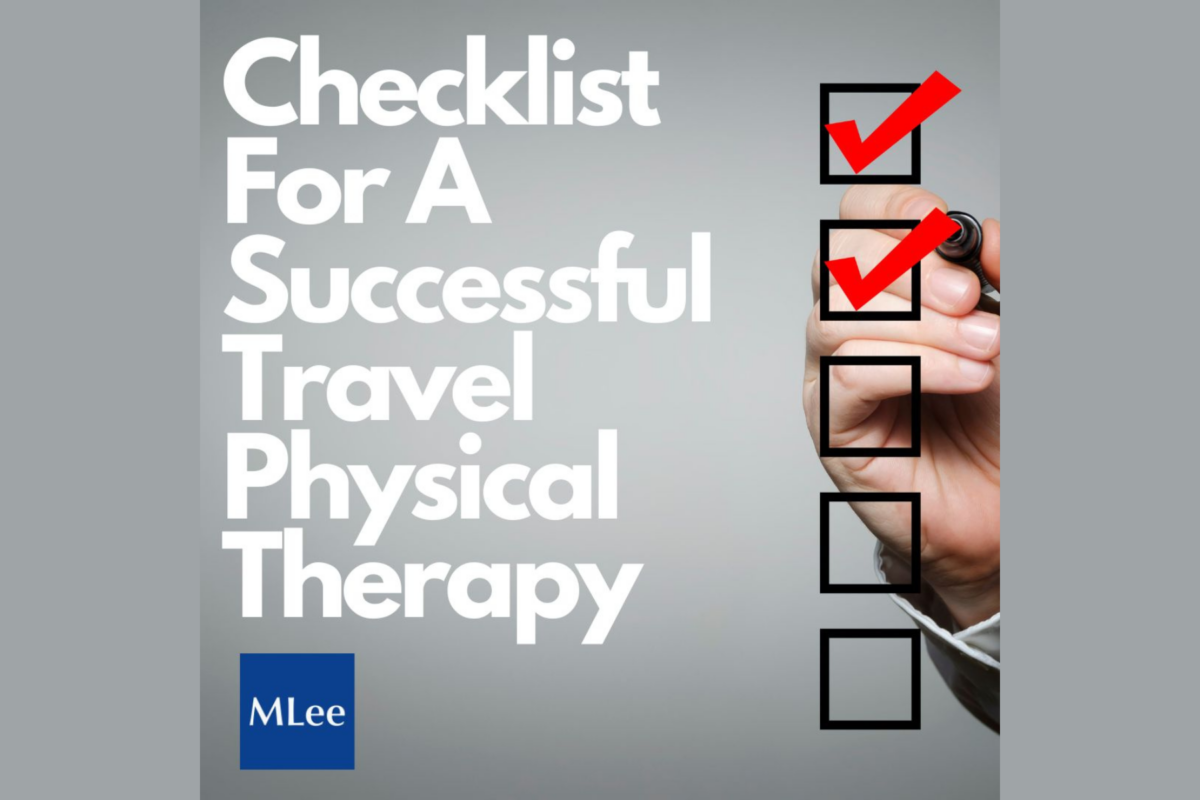Are you a healthcare traveler in search of a dream assignment in a tropical paradise? Look no further! The United States offers a


Once you sign your new contract, finalize documentation, and confirm accommodation, it is now time to pack all your essentials. As a traveling PT, packing your essentials can quickly become overwhelming. Fortunately, we have compiled a thorough checklist of everything you need for a successful travel physical therapy assignment.
It is time to pack for your first assignment after deciding to pursue your clinical skills and satisfy your adventure to see new places by attaining your traveling PT certification. We have put together a travel checklist to make your journey more organized and successful. Without further ado, below are the essentials needed for a successful travel physical therapy assignment.
One of the most vital dos in your travel physical therapy checklist is determining your priorities and goals. Here are a few questions that you should consider asking yourself.
These questions will help you address some of the issues you are likely to face as a travel physical therapy expert. It is advisable to use a simple spiral notebook, diary, or planner to keep track of everything you have done and what is left. It will also help you scribble down new priorities or objectives that may arise as you continue with your journey.
Always keep your resume up to date before going for any travel physical therapy assignment. Thus, it would be best to distinguish yourself with a competitive and compelling resume. Find various resources with insightful resume tips that help you update your resume to convey your skills to any potential employer.
The National Physical Therapy Examination (NPTE) is mandatory for all traveling PTs. However, you must also have a license in each state where you practice. Furthermore, as you may be aware, not all states follow the same licensing protocols and traveling PT regulations.
For instance, some states may need you to pass a jurisprudence test. You may also need to get fingerprint clearance and extra training hours to obtain the requisite credentials. Thus, set aside sufficient time to accomplish all required tasks to attain the necessary licensing and qualifications, which may include:
Note that several states have come together under the Physical Therapy Licensure Compact to reduce the regulatory requirements for traveling PTs. In turn, they can practice in several jurisdictions using one license. However, traveling PTs must buy PT Compact privileges, and they should also be aware that not all states are partisan to the agreement.
As you may already know, traveling PTs get tax-free stipends provided they keep detailed records of their expenses and income. Depending on where you practice, you may have to pay taxes on each of them. However, some states practice the ‘reciprocity agreement,’ allowing traveling PTs to pay income tax to one state only.
The IRS encourages traveling physical therapists to establish a tax home, a primary place of business where you work as a self-employed individual or an employee permanently. You must pay the rent at ‘fair market value’ and work at your tax home for at least 30 days per year. To avoid confusion and significant taxation liability, consider consulting a travel tax specialist or an accountant.
Even though you are on a traveling PT assignment, anything can happen, including losing your job. You could be 1500 miles into your trip and even signed a lease for your residence, only to discover the termination of your contract.
In this case, getting in touch with reputable recruiters specializing in placing traveling PTs is worth trying. You could ask for references of a genuine recruiter from a veteran traveling PT and their experience with working with them. You could also research to find reputable recruiters who care about advocating for professionals like yourself. Read through their testimonials and how they demonstrate their values.
It is also possible to attend PT conferences as they usually accommodate face-to-face meetings with experienced traveling PT recruiters. However, you must be aware of all the contract terms and associated fees of these recruiters before choosing your preferred choice.
Once you have verified these items in your checklist, you are well on your way to securing your traveling PT career. So, if you are ready with all your credentials and licensing qualifications and are well-conversant with tax guidelines, you are well-prepared to start your traveling PT assignment.